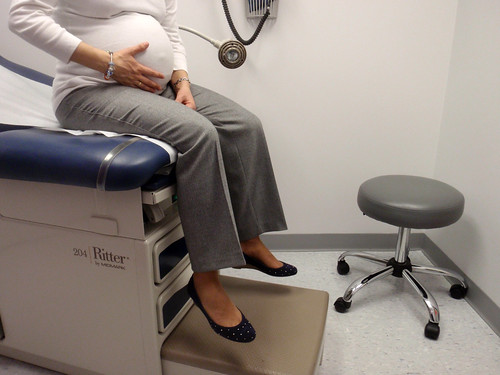After getting ready to try for so long, then putting my preparations into high gear and trying to conceive earlier than planned, and then trying to conceive for 10 months, I am finally pregnant and nearing the end of the first trimester! Hopefully I will go back and have time to share more about my TTC experience at a later date, but at this point I want to focus in on my experiences of pregnancy and share what's been happening.
Here's a quick overview of weeks 1-12 (I know gestational counting is a bit confusing, but I am counting day 0 as the first day of my last menstrual period because that's what doctor's do. Later I'll just start saying what week I'm in - so 12 weeks will mean that I have fully finished 12 weeks gestation and am sometime between 12 and 13 weeks):
- 0-1 weeks pregnant - Finally completed the requirements for my PhD!!! Wouldn't it be crazy if this was the month DH and I were successful at TTC? I wonder when I'll ovulate this month...
- 1-2 weeks pregnant - What an unexpected surprise - I ovulated on time (early even)! I guess I'll be thankful to Thanksgiving for speeding up my cycle.
- 2-3 weeks pregnant - I literally JUST finished my degree (seriously, I don't even have the diploma to prove it), do I really need to start working full time already?
- 3-4 weeks pregnant - No way?! Positive pregnancy test at 8dpo? I can't believe it! Hoping the third time is the charm. It's been 3 months since my last chemical pregnancy. Thanks to a standing appointment at my doctor's office, I get a positive blood test at 10dpo (HCG = 40). Progesterone looking good too (hopefully the supplements will help).
- 4-5 weeks pregnant - Still not feeling very pregnant, but the tests are actually getting darker this time and no sign of dropping temperatures. Follow-up HCG test at 16dpo = almost 800.
- 5-6 weeks pregnant - Christmas time! Have a confirmatory OB appointment this week - pelvic exam looks fine, HCG up to almost 10,000, progesterone levels still holding. Disappointing, though, because I was told I'd get my dating ultrasound at this appointment. Oh well, I'll have it soon and we should be able to see more (maybe even the heartbeat!). Glad I can spend the time with loved ones and still feel good eating whatever I want. Sadly, nausea starts to kick in at the very end of this week.
- 6-7 weeks pregnant - So nauseated, ugh, and getting worse! Everything sounds gross to eat, but if I don't eat I feel worse. Smells are overpowering. DH, mom, and lil sis all come with me to my dating ultrasound at the end of this week (I keep a barf bag with me during, just in case). There we can clearly see one little bean with a tiny heartbeat! Baby is supposed to be the size of a cranberry now. His or heart is beating away at 126 bpm, measuring about half a centimeter crown to rump. Ultrasound dating puts me at 6 weeks, 3 days. At the end of this week, I break down and ask for a prescription for nausea medicine (so far still no vomiting, despite some close calls). Doctor's office prescribes Zofran. There are, of course, shenanigans with insurance that delay me getting my medicine. Even then I can only get 12 pills! Sunday morning, I take the smallest possible dose (cutting one 4mg pill in half) and head off to church. The nausea relief seems to last full on for 2-3 hours, then I feel a bit yucky. But overall the day is much better than the previous.
- 7-8 weeks pregnant - I continue with a daily dose of 2mg of Zofran, which seems to definitely take the edge off of my nausea. Some days it's still fairly unpleasant in the evening, and I still hide out in bed as much as possible (reclining and staying away from the smells of the main house seems to settle my stomach). By this point, DH is doing all the household chores and shopping (sorry, honey!). Our dog barely sees my face and misses his usual pets and attention. I am very grateful this week that I'm not doing this on my own. At the end of the week, I have a sudden reprieve from nausea and actually feel well on Sunday when I go with Lil Sis to the first practice of the adult choir I'm joining with her. Sadly, the nausea is replaced by very intense constipation (not that things have been moving that well the past 2-3 weeks either). Sunday evening is occupied with a trip to get some emergency stool softener (Colace) and then several unpleasant sessions on the potty. By bedtime, the toilet is clogged and I feel a bit better, although I still sense a backlog. Oh, the indignities of pregnancy. The next day will require DH to shop for a better plunger :(
- 8-9 weeks pregnant - Things on the nausea and digestion front are mostly unchanged. I keep up with my Zofran and Colace regimen and some days are better than others. I thank my lucky stars that working from home is an option for me a couple days a week. If I had to put on real clothes and sit at my desk every day of the week, I don't think I'd make it. Toward the end of this week, I receive a surprise gift in the mail - a fetal heart doppler! Naturally, I set to work right away trying to find the baby's heartbeat and at 8w3d I am able to find it after several minutes of searching. What a joy and relief <3 It is too faint to pick up the exact rate, but I estimate that baby's heart is now beating about 160bpm. The nausea has been a comforting sign, but it's so nice to have some additional evidence that everything is okay with the little one. Given the unknowns about doppler safety (although they are most likely perfectly safe), DH and I decide to limit use of our home doppler to once a week for no more than 5 minutes. Baby is now supposed to be the size of a raspberry.
- 9-10 weeks pregnant - Nausea continues, but otherwise nothing interesting going on this week. For a few days I think maybe the nausea is ebbing, but then toward the end of the week it hits again full force and I end up doubling my Zofran dose (2mg twice a day instead of once). DH and I begin to evaluate the room that will become the nursery and actually clean it up a bit.
- 10-11 weeks pregnant - I have my first real prenatal appointment this week. Other than thinking I might throw up in the waiting room (still no actual vomiting to this point, fingers crossed), the visit goes well. The midwife takes a good 20 minutes to answer all my questions and uses the office fetal doppler. She finds the heartbeat quickly and measures it at 170bpm. Still signs of just one baby. So far I haven't gained any weight (but seems I've about regained any I lost earlier). Hoping to continue healthy gain throughout pregnancy. Also, blood tests reveal no concern about anemia, which is a relief. Looks like I can continue my gummy vitamins until I feel better (which I really hope will be soon).
- 11-12 weeks pregnant - Nausea is still going strong, but constipation is much improved by this point. I am able to eat a variety of things now, many of which resemble healthy choices (except the Girl Scout Cookies that just came available this week!). Still some aversions, of course, with meat being a big one (luckily I can still get my protein in by hiding it in sauces). I don't think I'm showing yet, but I keep thinking maybe my belly is pooching a bit more than normal. But maybe it's just my imagination. Either way, I'm glad it's winter and I'm relying on loose pants and big sweaters to get me through. I plan to start taking bump pictures next week so I can have a basis for comparison week to week. Evidently baby is now the size of a lime and looks a lot like a full-sized baby.
Please share your first trimester experiences in the comments below. What symptoms did you have and when? What were your must-have maternity items?






